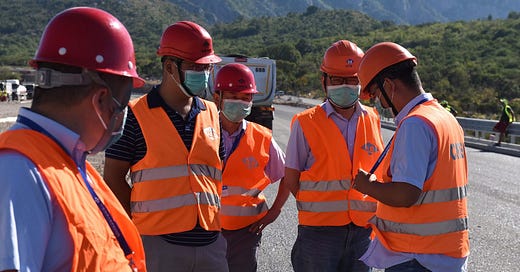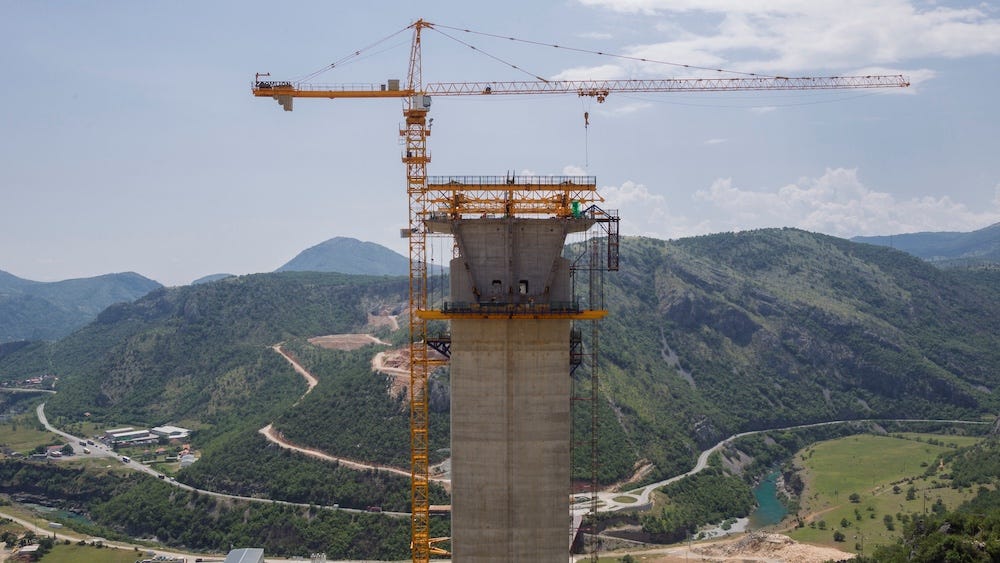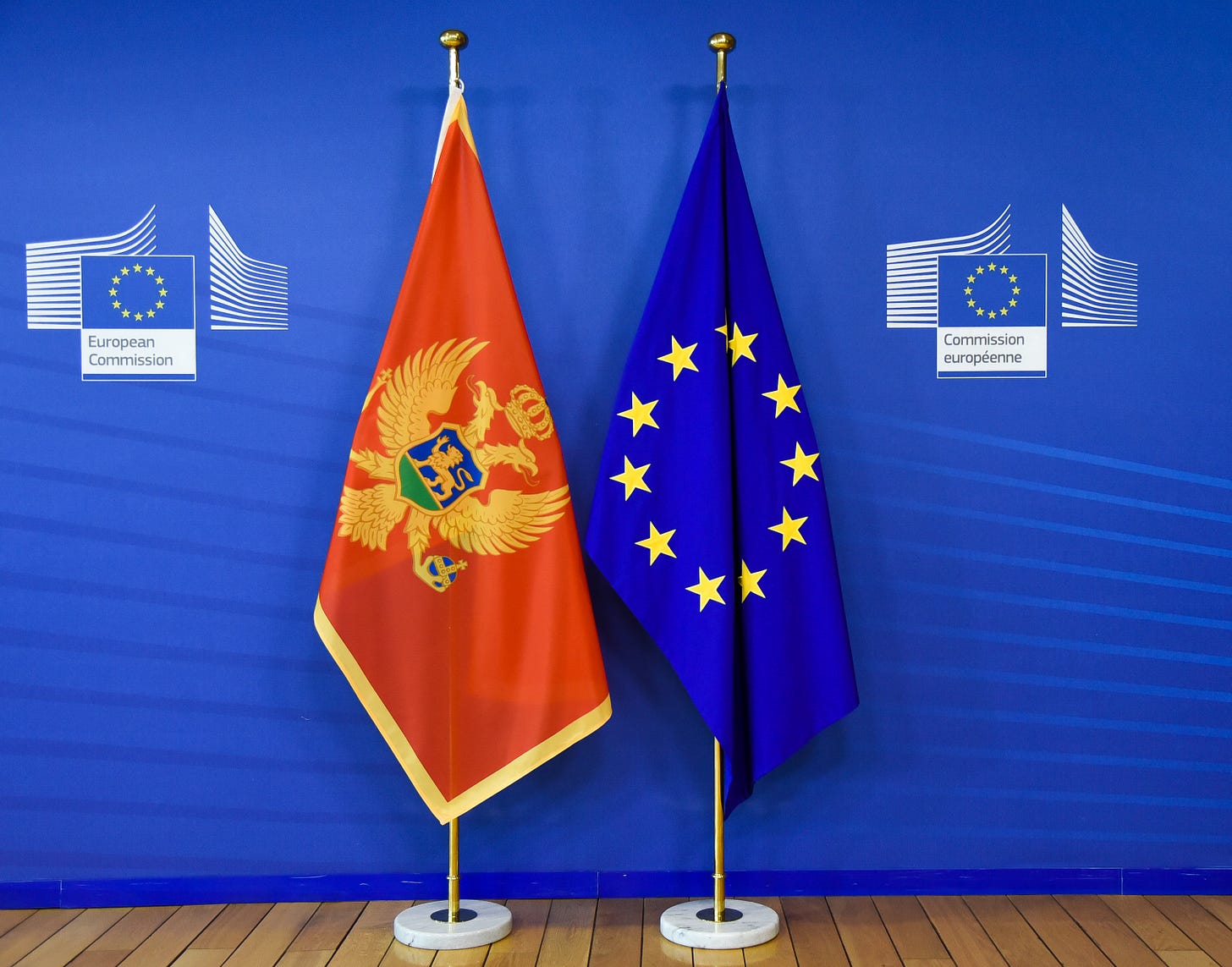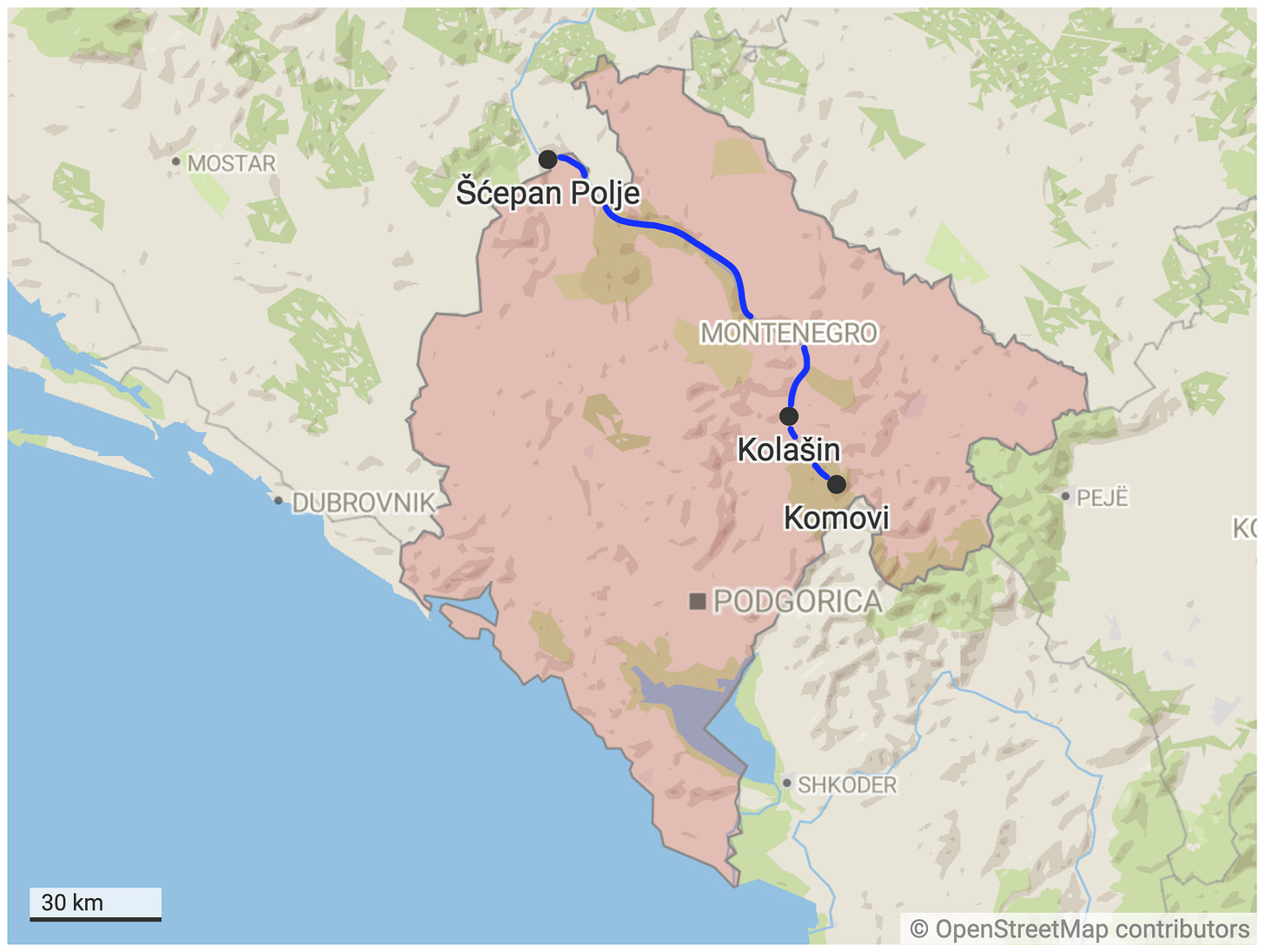XLIX. The Chinese all-in in Montenegro
If Podgorica fails to repay the $944 million motorway debt, Beijing may take control of a strategic port on the Adriatic Sea. Meanwhile, the EU is concerned and environmental disruptions are occurring
Hi,
welcome back to BarBalkans, the Italian newsletter whose aim is to give a voice to the Western Balkans’ stories, on the 30th anniversary of the Yugoslav Wars.
Just two weeks ago we crossed Montenegro [47th episode, “The land of comics”]. Today, we are forced to head back, because of an issue that is turning more and more disturbing with each passing day.
It concerns the debt Podgorica owes Beijing, the future consequences if it will not be repaid and the environmental disasters that all this is producing.
Moreover, the European Union is ethically troubled.
Because China is not only “playing poker” in Serbia, but also moved all-in in Montenegro.
And if Beijing wins, we will all feel the consequences.
A state under eviction
To frame the issue, one number is enough.
Each Montenegrin owes China around 1,300 euros.
The estimate is confirmed by the Center for Investigative Journalism of Montenegro’s report on Chinese investments.
In a country of around 620 thousand inhabitants, the public debt has grown dramatically to 4.33 billion euros, 103% of GDP.
One fifth of the public debt is in the hands of a single creditor: the Export-Import Bank of China, an institutional bank that promotes the export of Chinese products and services.
This means 944 million dollars, granted by the Chinese bank in 2014 for the A1 Bar-Boljare motorway construction: 160 kilometers from the Adriatic Sea to the border with Serbia, flowing into the Montenegrin capital.
The first section under construction is between Podgorica and Kolašin, while the latest 130-million-dollars loan should complete the entire length of the motorway.
Over the years, several independent studies have been carried out and shown the impracticability of the project. The very high costs are not justified by the future expected traffic.
The first stretch of road (41 kilometers) north of Podgorica is one of the most expensive in the world: around 20 million euros per kilometer, more than ten times the European average cost.
The expenses depend on the necessary infrastructures for the conformation of the territory. In particular, bridges to cross the valleys and tunnels to cut the mountains.
Seven years after the agreement with the Chinese bank, the great work has not yet been completed.
The first installment is be due within July, when Podgorica will have to pay out around 36 million euros (the annual interest is 2%).
But the State coffers are empty and this funding could become the largest demonstration of the Chinese debt trap in the region.
China is trying to expand its sphere of influence in the Balkan region, especially among countries that are not yet part of the European Union.
The main tool of this new economic expansion phase is the Belt and Road Initiative. A project that involves massive investments in infrastructure, to connect China with Europe, crossing Central Asia and the Western Balkans.
Considering Montenegro, China is both the largest creditor and one of the most important investors, just behind Russia.
From 2006 to 2019 Beijing invested a little more than 10 million euros, but the investments grew to 71 million only in 2020.
For the vast majority of these infrastructure projects, the most important contracts have been reserved for Chinese companies and the workforce comes from China.
However, the debts are all borne by Podgorica and the contract signed in 2014 could have a very important impact on the country and across Europe.
As observed by the think tank European Council on Foreign Relations, if the State fails to repay the debt to the Chinese bank, Beijing may have the right to take possession of some parts of the Montenegrin territory.
The aim could be the port of Bar. In a short time, China would be able to have its own outlet to the Mediterranean Sea.
The agreement signed by the government of Montenegro is called “debt trap”. It is a sort of loan sharking, but at international level.
In practice, countries with fragile economies rely on Beijing to obtain huge loans, even if they are always alerted to the danger by international financial institutions.
Predictably, these countries are unable to repay the huge debts and, at the end, they are forced to cede part of their sovereignty as part of a repair clause.
This scenario already happened in Sri Lanka. In 2015, the Southeast Asian country fell into the debt trap and had to hand over the management of the port of Hambantota (strategic on the Indian Ocean) for the following 99 years.
Ports are Beijing’s favorite prey, from Asia to Africa and Europe.
In the Old Continent, the outpost is in the port of Piraeus (100% concession). But from Marseille to Valencia, Rotterdam and Dunkerque, almost every country is dealing with the Chinese presence in the properties of European ports.
The immediate problem lies with Montenegro.
In perspective, it lies with the entire European Union.
The European concern
According to the President of Montenegro, Milo Đukanović, China is willing to extend the six-year “grace period” (that will expire in July).
«The loan will be repaid in 28 annuities, over 14 years», the President stated on Wednesday (26 May). «A meaningless drama has been created» on the issue.
However, in Brussels, they do not think the same.
Much has been written regarding the help that the EU should give to Montenegro. But it is better to make order.
In principle, the EU has neither the right nor the duty to take on the 944-million-dollars debt (approximately, 809 million euros).
It would be like saying that every European citizen owes Beijing 1.5 euros. It would not be unsustainable, but still charity.
At the same time, we cannot assume that the EU institutions have no worries that parts of Montenegro may be ceded to China.
They will arrive in the form of investments, that will set in motion the national economy. On October 6, 2020, the EU Commission’s Economic and Investment Plan for the Western Balkans has allocated a total of 29 billion for the whole region.
In addition, the European Commissioner for Neighbourhood and Enlargement, Olivér Várhelyi, confirmed that «the second installment of the 60 million euro macro-financial aid scheme for Montenegro will arrive by the end of May».
In short, there will be economic, financial and commercial support from Brussels, driven by the desire not to leave the new government led by Zdravko Krivokapić alone, facing heavy burdens.
Podgorica is asked to plan a virtuous circle of reforms, in order to unlock the economy and to conclude the process of EU accession.
We have recalled several times that the Western Balkans represent the first area of geo-strategic influence for the European Union.
Following some difficulties [as we have seen in the 41st episode, “The vaccine battle for Middle-earth”], the EU institutions demonstrated to be able to respond to the anti-COVID vaccines needs.
More than 126 thousand doses will arrive in Montenegro (out of over 1.5 million throughout the region), thanks to the COVAX facility and the EU shipments.
The risk that China may take possession of a strategic port on the Adriatic Sea for a hundred years puts Brussels in an awkward position.
Immobility or refusal of support are not an option. But more dynamism is needed by all the European players, at this international poker table.
On the contrary, we will see soon negative effects on several levels. As reality is already demonstrating.
Environmental disaster
One of the greatest worry about this whole affair concerns the damage for the environment.
This is no small thing, since the hydrogeological instability is taking place in a UNESCO World Heritage Site: the Tara River.
According to the Environment Protection Agency of Montenegro, the China Road and Bridge Corporation destroyed about 7 kilometers of the river bed - including its biodiversity - during the construction of the A1 motorway.
This problem was caused by the construction of bridges and the uncontrolled extraction of gravel and sand. With erosion of the river bed, every day the river banks risk collapsing.
Moreover, the piles of rubble scattered along the banks, falling into the river, have created layers of silt that prevent fish spawning.
In 2019, some NGOs and UNESCO experts warned of the risks of this project and the EU Commission asked the authorities to «show more decision in preventing the possible effects on the environment».
On March 3, the Montenegrin Prosecutor launched the first investigation into the environmental damage along the Tara River.
The Chinese company is under investigation for having started the works without all the environmental permits. According to the prosecutors of Kolašin, the damage is «serious and over a large area».
Facing the opening of the investigations, the China Road and Bridge Corporation asked the Environment Protection Agency for permission to plan the repair within 4 months.
But only for 500 meters of river banks, near the village of Kolašin. The request says:
«Remedial work is necessary after damage that occurred during the execution of works on the Matesevo loop. The stabilization of the left bank of the Tara, under the old Matesevo bridge, to a length of 500 meters, should be completed by October».
According to the assessments of the Chinese engineers, the quality of the soil has not been altered and the river bed will reach the natural level by itself.
Even if it is not sure that the situation is that slight in that 500-meter stretch, it is worrying that the remaining 6.5 kilometers are not even considered.
The entire area of the Tara River is a protected natural site and the canyon has been a UNESCO World Heritage Site since 1977.
We can understand its value, just recalling that it is called “the tear of Europe”, so far one of the most unspoiled rivers all over the continent.
In recent years, local environmentalists had focused their battles against the uncontrolled construction of small hydropower plants.
But today they have to face the immense pressure from new economic and geopolitical giants.
In the Balkan poker game, China moved all-in in Montenegro. Now, it is time to show their hand.
Pit stop. Sittin’ at the BarBalkans
We have reached the end of this piece of road.
This is the perfect time to taste one of the many varieties of rakija, the most popular and traditional alcoholic of all the Western Balkans.
Today, we try dunjevača, a distillate made from the fermentation of quince.
This aromatic fruit - that recalls the East - gives the distillate a golden yellow tint, a crystal clear appearance and a delicate scent.
Following the fermentation and distillation process, the liquid rests for months in oak barrels, where the aroma becomes more balanced and intense.
Only then, it is ready to be served at our bar, the BarBalkans.
Let’s continue the BarBalkans journey. We’ll meet again in a week, for the 50th and last stop for this first year spent together!
A big hug and have a good journey!
BarBalkans is a free weekly newsletter. Behind these contents there is a lot of work undertaken. If you want to help this project to improve, I kindly ask you to consider the possibility of donating. As a gift, every second Wednesday of the monthyou will receive a podcast with an article about the dissolution of Yugoslavia.
If you want a preview, just listen to BarBalkans - Podcast. You can find it on Spreaker and Spotify!
As always, I thank you for getting this far with me. If you are interested in Montenegrin society, I recommend you this previous newsletter (while here you can find all the others):
If you want to help me to make this experience grow, you can invite whoever you want to subscribe to the newsletter:
Pay attention! The first time you will receive the newsletter, it may go to spam, or to “Promotions Tab”, if you use Gmail. Just move it to “Inbox” and, on the top of the e-mail, flag the specific option to receive the next ones there.
BarBalkans is on Facebook and Instagram, while on Linktree you can find the updated archive.










